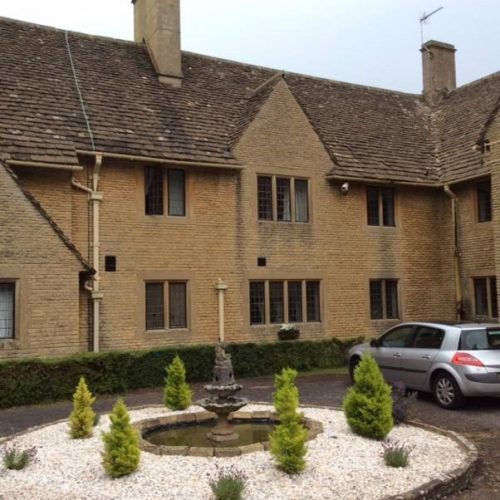
Sulis Manor is an unlisted 1930s manor house, built in the Arts & Crafts style on the southern edge of Bath. From 2014, the manor was incorporated into the site allocation for the wider Sulis Down development under Policy B3a of the Core Strategy and Placemaking Plan. The building has previously been used as a residential study centre with improvements to the accommodation for students and staff permitted in 2013.
2022 – Update on Sulis Manor as part of Ongoing Sulis Down Development
The manor house remains untouched on the Sulis Down plateau as of 2022, and has been indicated to form Phase 2 of the Sulis Down development masterplan. We note that local Policy B3a refers to Sulis Manor in its established Placemaking Principles, emphasising that development should “incorporate Sulis Manor and garden into development sensitively, retaining the framework of trees, and considering the conversion/retention of the Manor House and/or a low density development”.
2017 – Proposed Demolition of Sulis Manor
In 2017, application 17/03304/DEM was submitted for the proposed demolition of the manor house, to clear the site ahead of redevelopment. The application was a Prior Approval Notice, seeking to demolish the manor house under Permitted Development rights.
The conservation officer concluded that the building was considered “a highly important heritage asset” despite being unlisted; “taken together the historic house and garden form an important ensemble that not only make an important and positive contribution to the visual quality of the area and the historic environment but are also important in terms of undesignated heritage assets within Bath and North East Somerset.”
In response to this threat to completely demolish a Non-Designated Heritage Asset (NDHA), BPT sought to have the building put onto the National List; we highlighted the manor’s interest as a rare example of a late Arts & Crafts manor house, designed by the notable architect S.S Reay. We found the building to be in an excellent condition internally and externally, with a high volume of original features such as hand-carved joinery and leaded casement windows surviving in-situ.
Read our listing application to Historic England here.
BPT’s application for listing was unsuccessful. However, application 17/03304/DEM was withdrawn on the grounds of possible bat roosting on the site.

